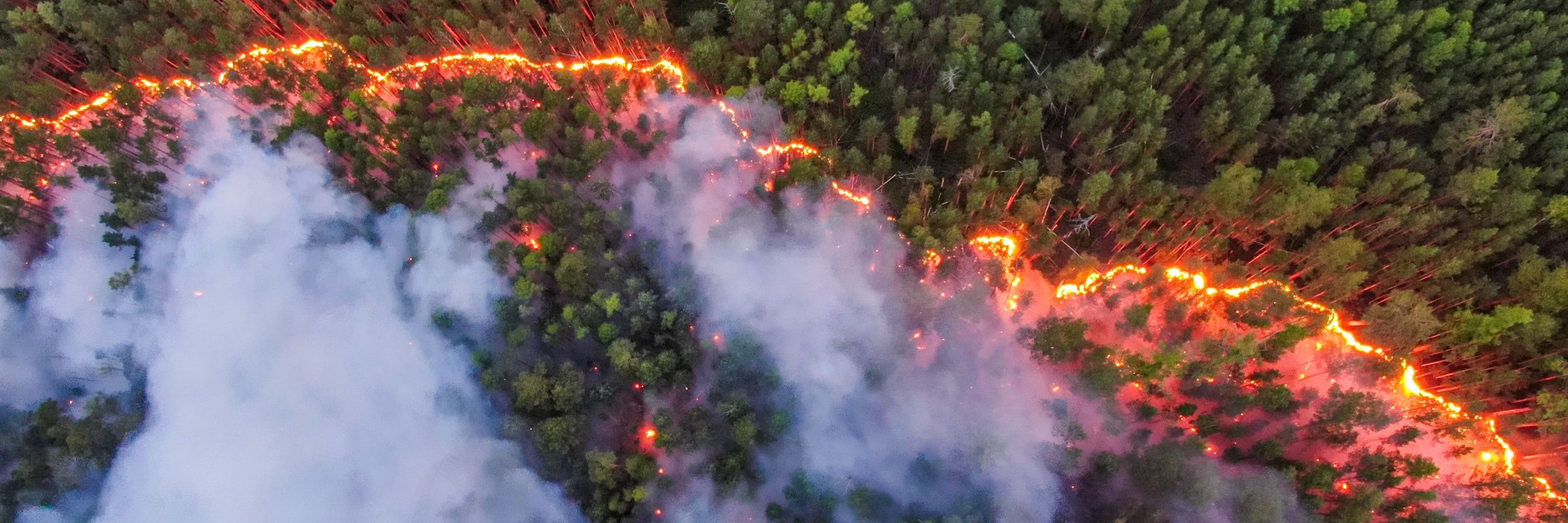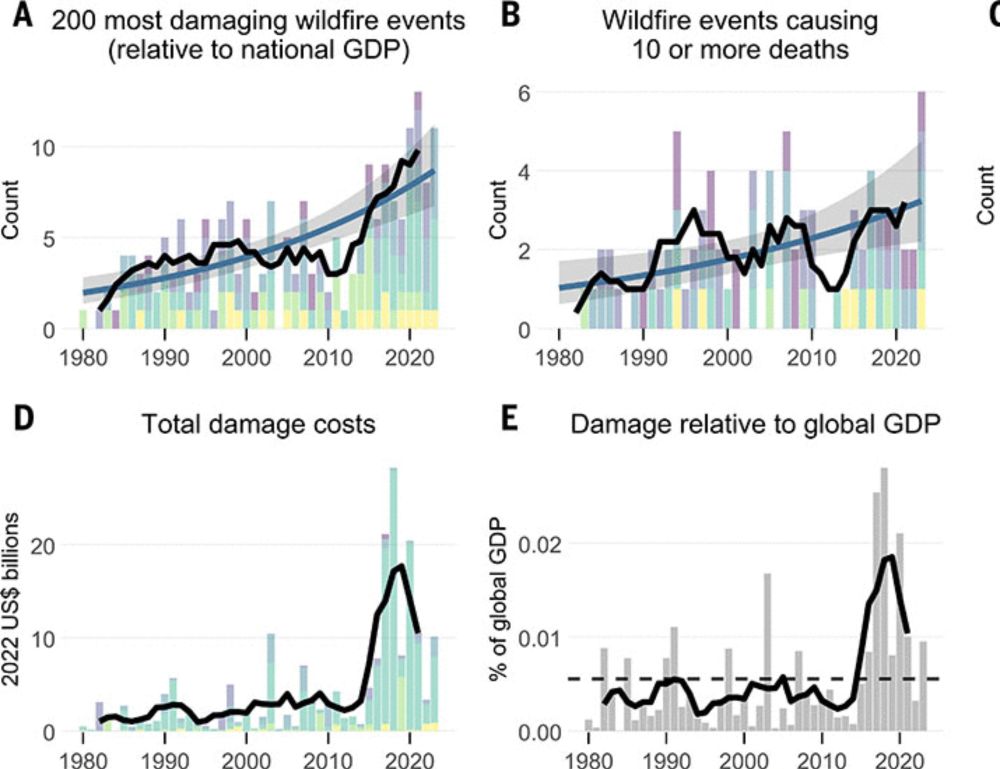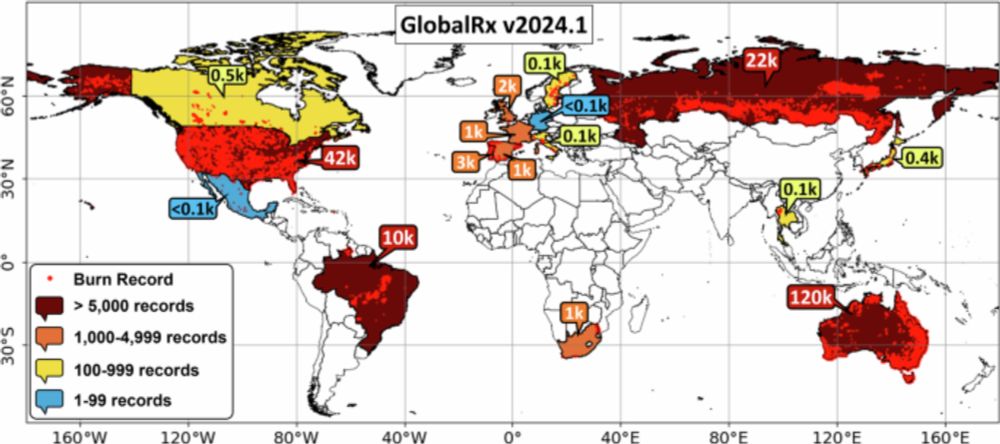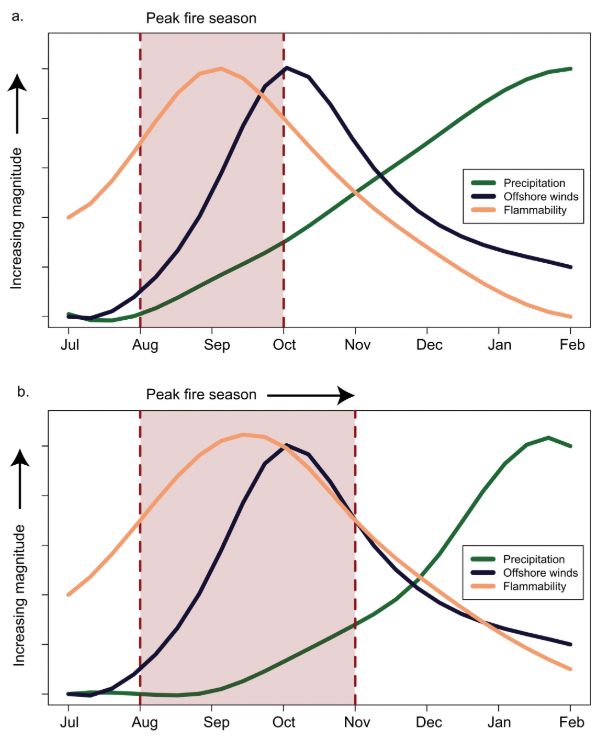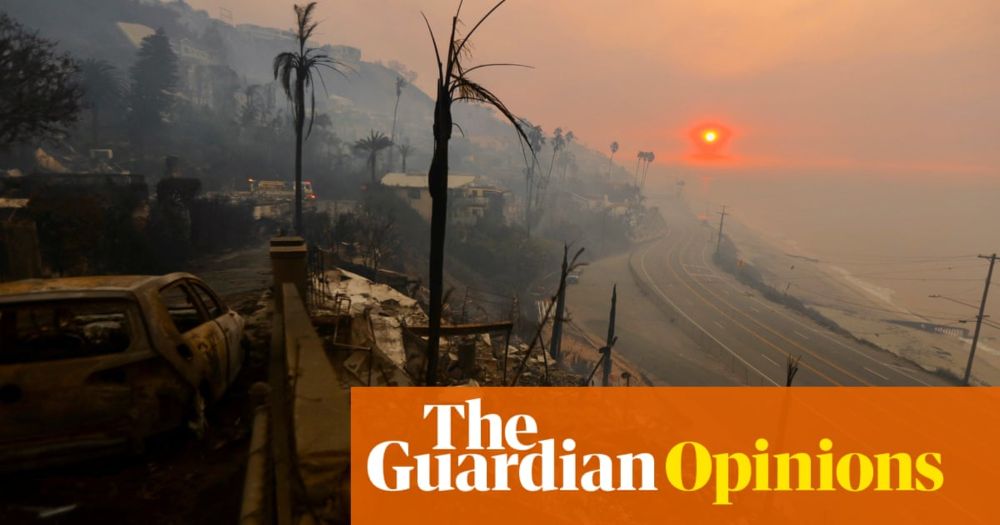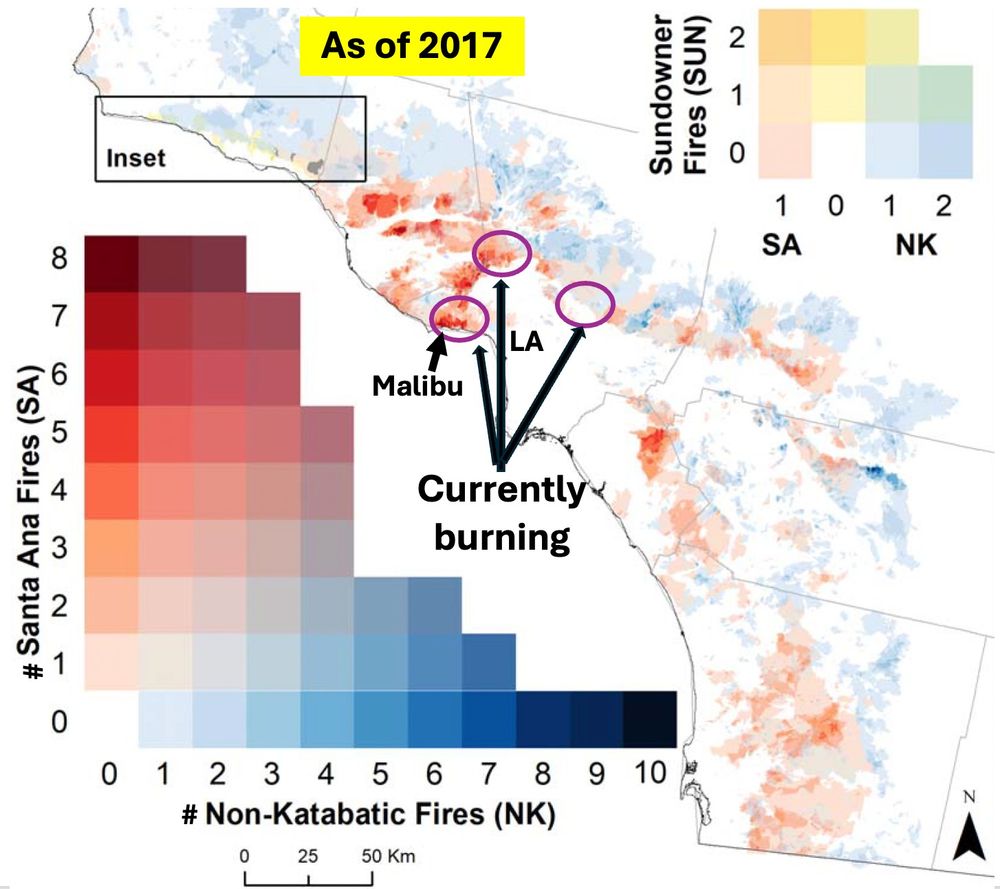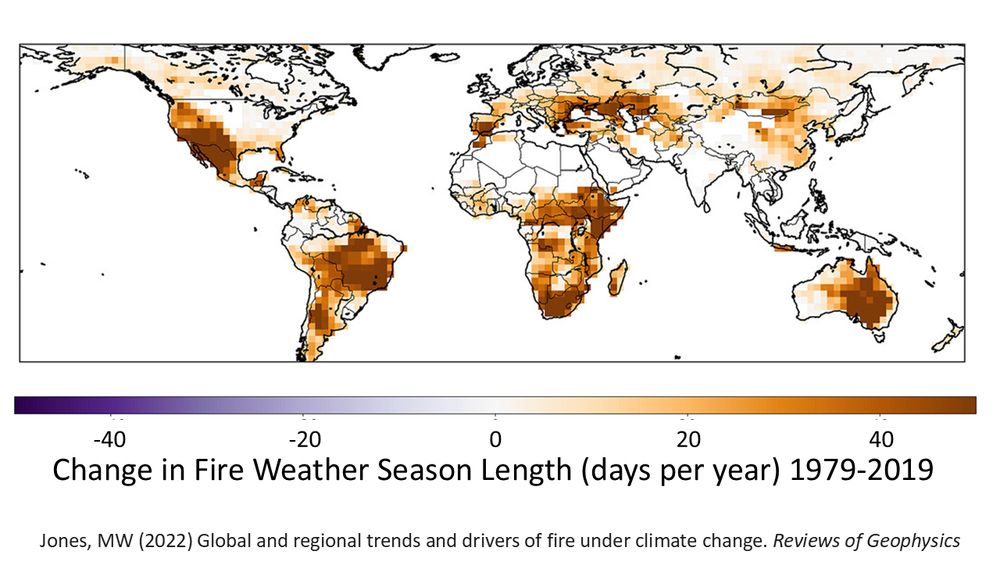Matt Jones
@mattwjones.bsky.social
480 followers
180 following
11 posts
Carbon Cycle, Fire, Emissions, Climate 🌎🔥
NERC Research Fellow, University of East Anglia (UEA) / Tyndall Centre.
Co-lead: State of Wildfires Project.
Editor-in-Chief: Journal of Pyrogeography.
Member: Global Carbon Project.
mattwjones.co.uk
Posts
Media
Videos
Starter Packs
Matt Jones
@mattwjones.bsky.social
· Aug 22
Matt Jones
@mattwjones.bsky.social
· Aug 22
Matt Jones
@mattwjones.bsky.social
· Aug 22

Increasing global human exposure to wildland fires despite declining burned area
Although half of Earth’s population resides in the wildland-urban interface, human exposure to wildland fires remains unquantified. We show that the population directly exposed to wildland fires incre...
www.science.org
Matt Jones
@mattwjones.bsky.social
· Jul 11
Matt Jones
@mattwjones.bsky.social
· Jul 11
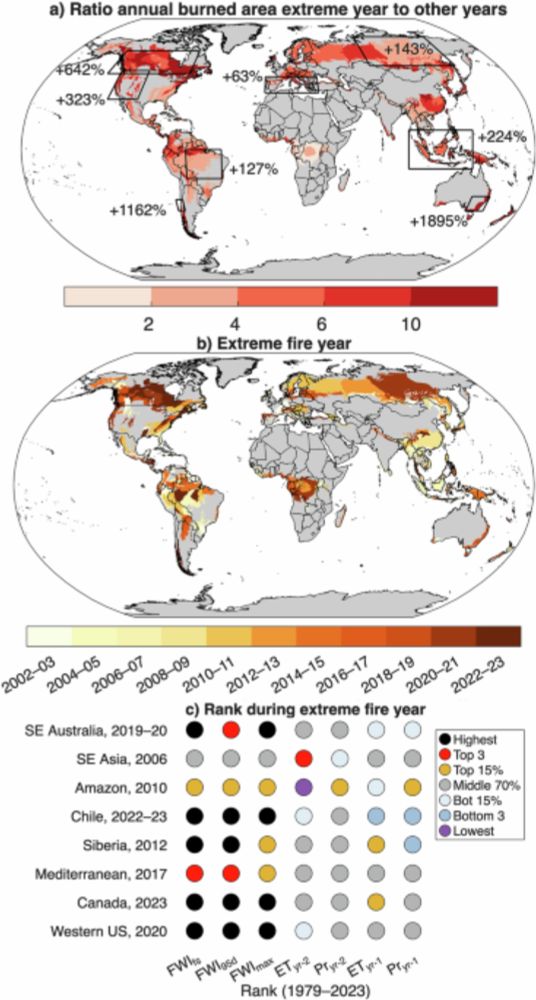
Climate change has increased the odds of extreme regional forest fire years globally - Nature Communications
The authors show that extreme fire years in global forests align with rare fire weather extremes. Climate change has made such extremes 88-152% more probable. These findings highlight the need for act...
www.nature.com
Matt Jones
@mattwjones.bsky.social
· Jul 2
GlobalRx: A global assemblage of regional prescribed burn records
File Name File Type Description ERA5_CEMS_Download_and_Resample_Notebooks.zip ZIP file containing Python Jupyter notebooks Code used to download and resample ERA5 and CEMS meteorological data from hou...
zenodo.org
Reposted by Matt Jones
Reposted by Matt Jones
Reposted by Matt Jones
Reposted by Matt Jones
Reposted by Matt Jones
